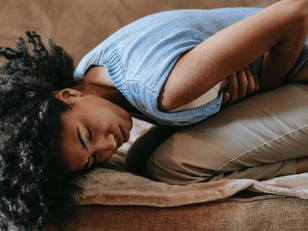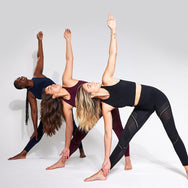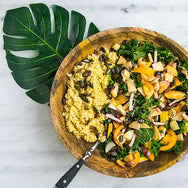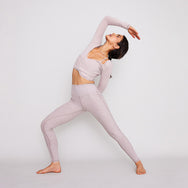As a psychologist specialising in obesity, I knew that our relationships with food were broken. I just wasn’t sure how to remedy this.
In my own battle against disordered eating I had tried everything; from juicing, to keto, to a particularly low point in which I ingested nothing but cabbage. The pattern had always been the same - I stick to the diet for a few weeks, lose some weight, fall off the wagon and gain more weight than I had lost.
It turns out that this wasn’t just me – 57% of people struggle to lose even 5% of their body weight when dieting, and around one to two thirds of people end up heavier than when they started (Mann et al., 2007).
Let’s just reflect on that for a moment. The scientific evidence that dieting is bad for our physical and mental health is overwhelming – it had a grade A in robust evidence (to put that into context, the link between smoking and lung cancer has the same grade). Yet diets are still encouraged and people willingly follow them, desperate to make themselves smaller, to conform to the toxic beauty norms that are rammed down our throats on a daily basis.
WHY IS THE DIET MENTALITY A PROBLEM?
It’s a bleak picture out there. Society tells us to be skinny, we become obsessed with calorie counting, clean eating or whatever the latest dieting trend is. The diet doesn’t work and we end up fatter, less healthy and with a difficult relationship with food to boot.
But it isn’t all doom and gloom. Fortunately Intuitive eating has shown me that there is a way out of this vicious cycle.
WHAT IS INTUITIVE EATING?
Founded by Evelyn Tribole and Elyse Resch in the 90s, this practice is essentially the opposite of a diet. It involves listening to your body, abandoning food rules, and getting the most satisfaction possible.
THE 10 PRINCIPLES OF INTUITIVE EATING
- Reject the diet mentality
- Honor your hunger
- Make peace with food
- Challenge the food police
- Respect your fullness
- Discover the satisfaction factor
- Honor your feelings without using food
- Respect your body
- Exercise — feel the difference
- Honor your health — gentle nutrition
The hardest part is that it requires hardcore self-compassion. Where dieting teaches us to beat ourselves up for eating certain foods, intuitive eating tells us that there is no wrong or right way to eat, and we should approach with curiosity, rather than guilt.
We know from the research that the more we restrict, the more we want that food. By vowing to ‘never going to eat carbs again’ or ‘only have one biscuit’, we immediately make that food more powerful. Restriction is basically like saying DO NOT PRESS THE RED BUTTON or telling a teenager not to date the bad boy with the tattoos. Restricting foods gives them power over us. Intuitive eating rids them of their power –no foods are better than others, and all are allowed at any time.
EAT WHAT YOUR BODY WANTS
The most common misnomer is that intuitive eating is simply eating anything you want, all the time. The small but critical difference is that it is actually eating what your body wants – so if you fancy cheese and crackers but you’re busting from dinner, it’s reminding yourself that you can have the cheese when you’re more hungry instead. If every time you eat bread you feel bloated and lethargic, have a go at eating less bread. The point is not to abandon nutrition altogether, but to tune into your specific needs, rather than somebody else’s rules that might not be what’s best for your body.
The issue that most people struggle with is the fear that ‘if I eat whatever I want I’d just eat [insert alternative delicious food here] all day’. This was my exact concern, which actually stopped me from starting intuitive eating for many months. I believed that if let go of my rules, I would choose pizza and cake for all my meals and gain weight.
I won’t lie; the first few weeks were a bit like that. Part of the process is convincing your mind and body that those previously restricted foods can now be eaten whenever you please. This means working your way down your banned foods list and one by one, eating them until they feel neutral. The aim, after some time (this varies between months and years, depending on the person – I’m still not entirely there yet), is that foods become neutral. I along with thousands of people who intuitive eating has helped am living proof that you don’t eat ‘junk’ food all day.
Eventually, those ‘naughty’, ‘junk’ foods lose their power and you tend to eat a balanced diet – reverting back to our innate abilities to know what we need to eat and when. Many studies have shown that when given the option of eating anything, children naturally eat all the nutrients they need. It turns out that the best way to eat isn’t through control or education, but through freedom that allows us to listen to our bodies.
The point is to tune into your specific needs
— Annie Zimmerman
CAN YOU LOOSE WEIGHT BY INTUITIVE EATING?
The golden and number one rule of intuitive eating is that it doesn’t work if you are trying to lose weight. It’s virtually impossible to honor your cravings, eat when you are hungry or feel that there are no good or bad foods if you are simultaneously trying to eat less or avoid certain foods.
This is the part I have struggled with the most. To make this easier I agreed I would put weight loss on the back burner, which means I can come back to it whenever I want. This felt less scary than completely abandoning the dream to have the ‘perfect’ figure, but it’s become clear that every time I’ve attempted to restrict certain foods, intuitive eating goes out the window and I end up eating way more than I would have without the restrictions.
As things progress you realise that being free from food obsession is much more important that looking a certain way. As my desire to have a healthy relationship with food became bigger than my desire to lose weight, I felt the chains of the diet prison growing weaker and that’s empowering.
HOW TO START INTUITIVE EATING
On paper, learning to eat intuitively sounds relatively easy. Just eat when you’re hungry, stop when you’re full and try to enjoy the food as much as possible. Simple right?
We are all born with an innate ability to eat in response to our bodily signals, but the problem is that the large majority of us have spent so long ignoring our real hunger, fullness and cravings. Getting back in touch with our bodies can be foreign and uncomfortable to start with. For starters, you have to actively break all of the food rules you’ve that have insidiously made their way into your daily eating habits.
For me, this meant daring to eat dinner after 6pm (SPOILER – I lived to tell the tale), eating chocolate when I wanted it (rather than Naked bars which, let’s be honest, are not an adequate replacement) and having bread on a regular basis. It might not sound that brave if you have managed to avoid the diet-culture that underpins our societal relationship with food, but for those who have fallen victim to the office tips or newest restrictive craze, you will know how hard it is to let go and just eat.
Before I began, I consumed many podcasts, books and articles in an attempt to absorb as much knowledge as I could, but it still didn’t prepared me for the minefield of trying to overhaul my relationship with food. Day-by-day, meal-by-meal, I’ve challenged every craving, hunger pang and food-related thought. Most of my thought processes went something like this:
- ‘I fancy some bread… should I have the bread?’
- I had bread for lunch, is bread allowed twice in a day?’
- ‘Yes that’s a silly rule! But am I actually hungry or am I just bored?’
To begin with, I was having conversations like this with myself constantly throughout the day. I thought of little else. While some may raise their eyebrows at a practice that involves thinking about food even more, it makes sense when you consider the restrictive rules and habits that had become ingrained over many years of dieting. It makes perfect sense that eating what I want is playing tricks on my mind, because for so long diet-culture tricked me.
INTUITIVE EATING IMPROVES YOUR RELATIONSHIP WITH FOOD
It sounds hyperbolic but it is the truth – intuitive eating has completely changed my life. It’s improved my relationship with food to a place I never thought possible. I always thought that I was the type of person who just simply had no self-control. At dinner parties, if someone bought out a bag of cookies or chocolate I would marvel at how people would ignore it or not have a bite, while I fixated on it for the rest of the evening. I would try to resist eating the alluring food, almost always fail and eventually eat it all in a frenzy. I wouldn’t even enjoy it because I’d be so ashamed or worried about eating such a fattening food.
I read advice from Intuitive Eaters who learnt to say no to the offer of cake because they were not hungry or have unopened packets of biscuits sitting in their cupboard. I scoffed that this would never be possible. But then, after a year of eating more intuitively, I realised recently that I’d been carrying a bar of chocolate in my bag and not even remembered it was there. I genuinely celebrated when I realised this, because previously, the bar would have been screaming my name all day.
CONCLUSION
Intuitive eating has given me my life back. I’m not longer consumed by thoughts of calories, diets or sugar-free recipes all day. I eat when I’m hungry, I stop when I’m full and the rest of the time I live my damn life, free from the shackles of diet-culture.





























































